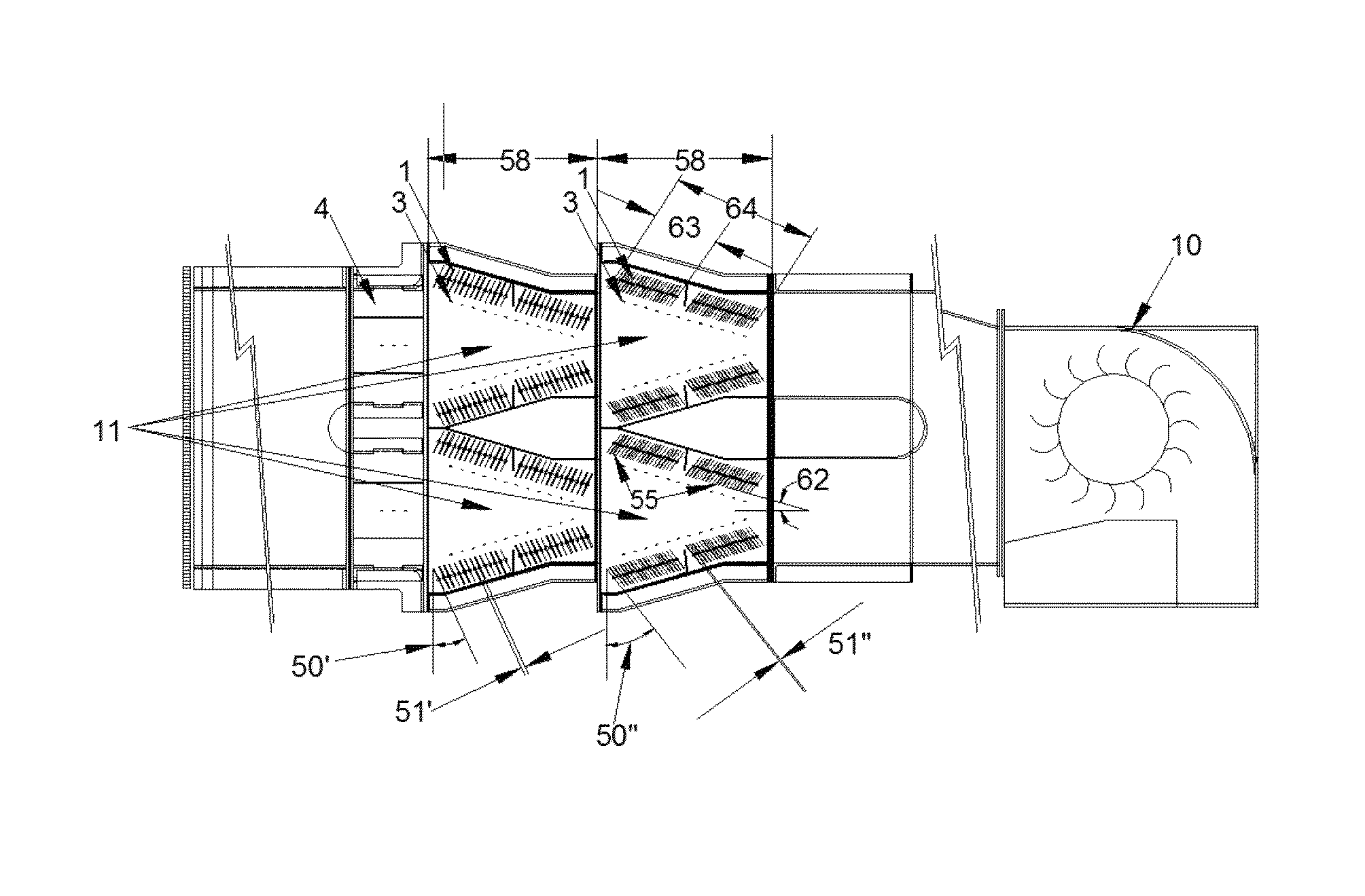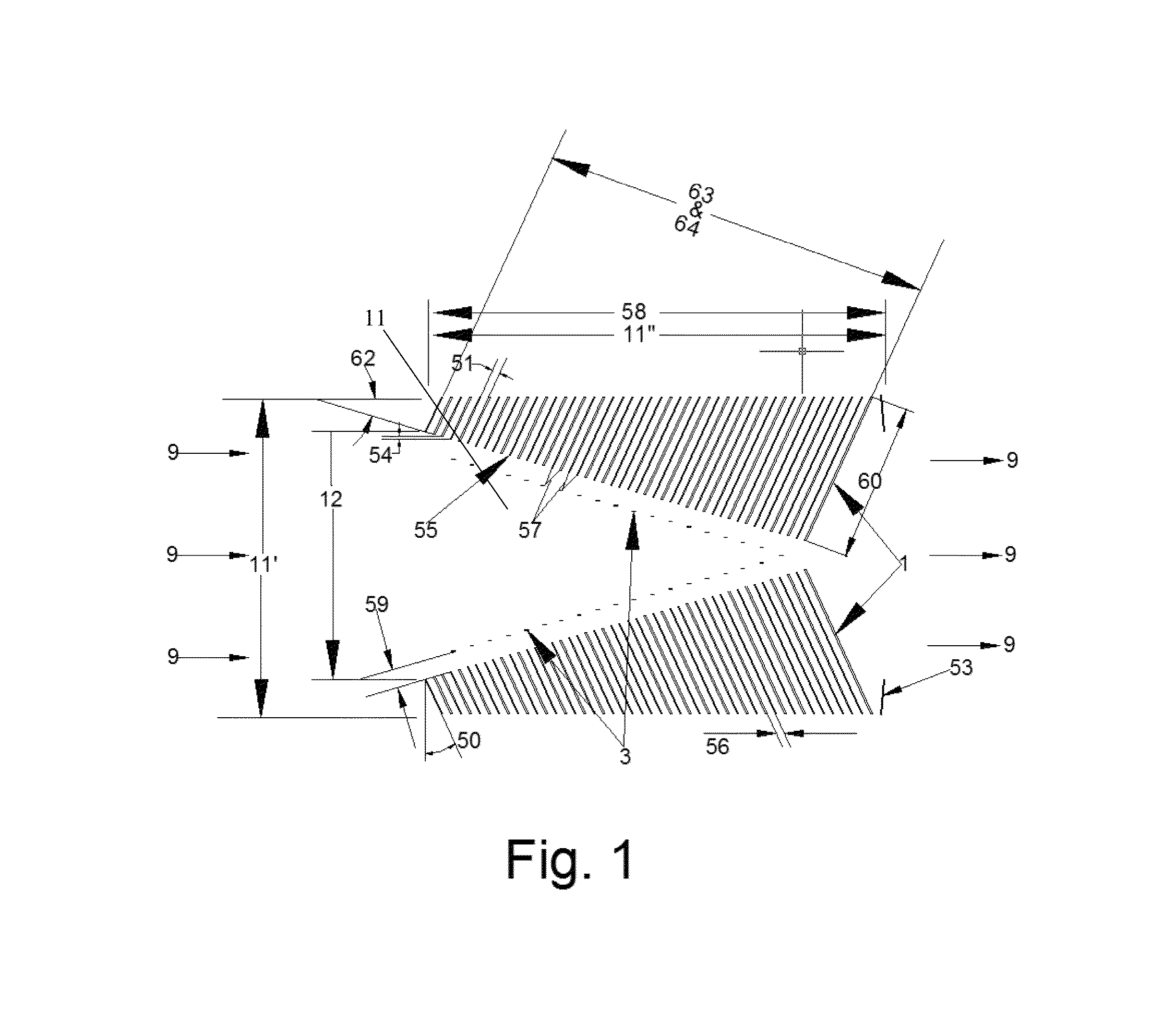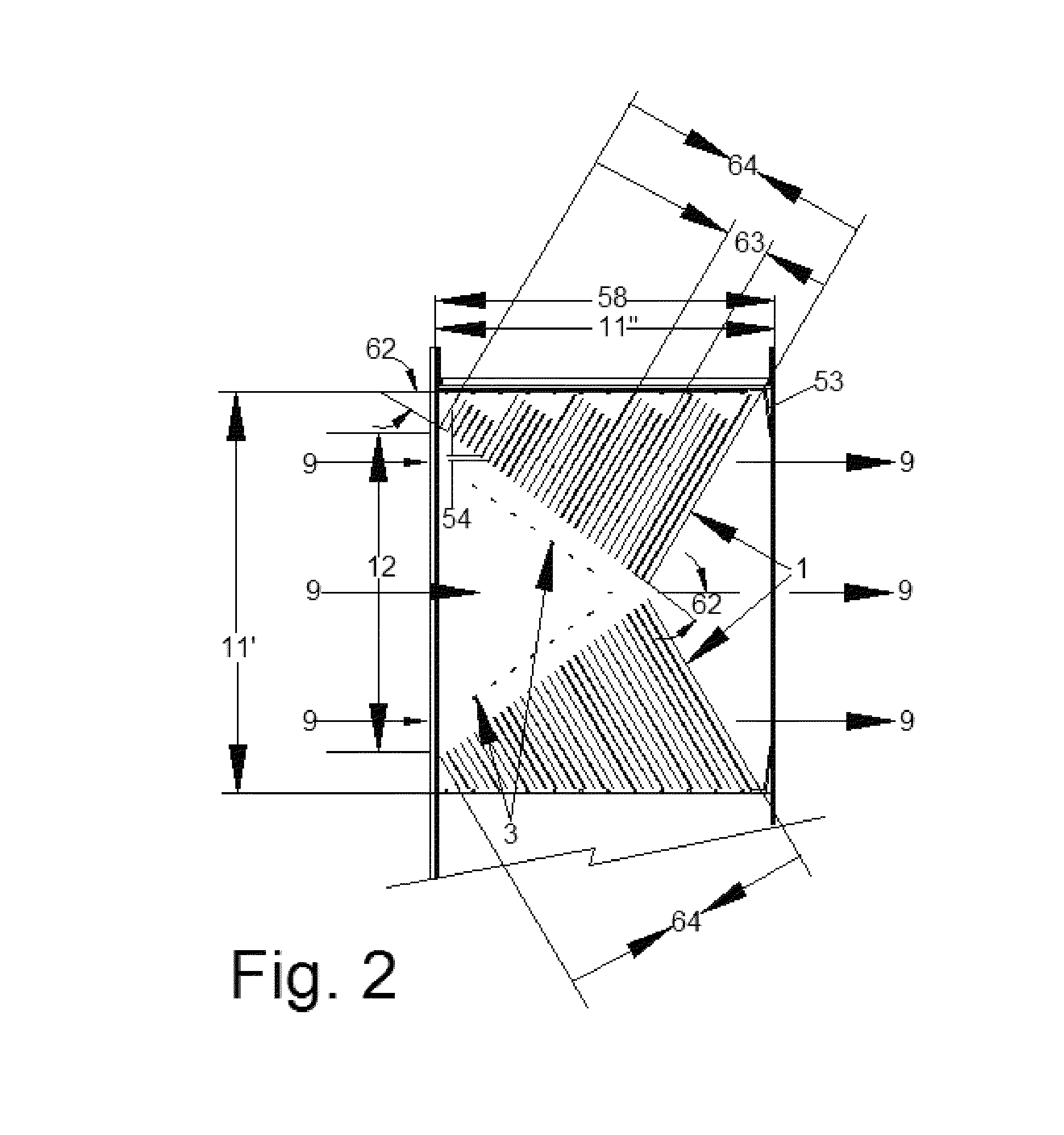Vane electrostatic precipitator
a precipitator and electrostatic technology, applied in electrostatic separation, solid separation, chemistry apparatus and processes, etc., can solve the problems of poor conductive particulates and difficult collection of high conductive precipitators of the past, and achieve efficient particle collection, low re-entrainment, and high operating air velocity
- Summary
- Abstract
- Description
- Claims
- Application Information
AI Technical Summary
Benefits of technology
Problems solved by technology
Method used
Image
Examples
Embodiment Construction
[0023]The terms “vane”, “vane electrode”, and “vane type collecting electrode” are used interchangeably herein.
[0024]Several new factors have been identified as having a major bearing on the collection efficiency of a vane electrostatic precipitator. These include the vane offset, the width of the orifices (with wider orifices, the air flow capacity increases and, in some applications, the length of the field is reduced), the vane assembly angle and the position of discharge electrodes in relation to the leading edges of the vane electrodes.
[0025]FIG. 1 shows a vane electrostatic precipitator in an embodiment of the present invention. Air flow (9) enters through an input orifice (12). FIG. 1 shows some of the main factors that affect how the vane electrostatic precipitator functions. These include the vane operating angle (50), the distance (51) between vanes (1), the total vane surface area (53) (which includes the surface area on both sides of each vane) per collection chamber (11...
PUM
 Login to View More
Login to View More Abstract
Description
Claims
Application Information
 Login to View More
Login to View More - R&D
- Intellectual Property
- Life Sciences
- Materials
- Tech Scout
- Unparalleled Data Quality
- Higher Quality Content
- 60% Fewer Hallucinations
Browse by: Latest US Patents, China's latest patents, Technical Efficacy Thesaurus, Application Domain, Technology Topic, Popular Technical Reports.
© 2025 PatSnap. All rights reserved.Legal|Privacy policy|Modern Slavery Act Transparency Statement|Sitemap|About US| Contact US: help@patsnap.com



